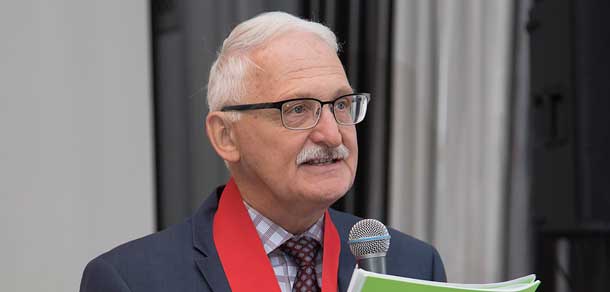I’ve been thinking lately about the inter-professional nature of much of the work that we do as professional engineers and geoscientists. I’m reflecting on how this inter-dependency among professions can confound public understanding of the roles of each profession and of the trust that is placed in any one profession.
This issue of The Edge contains feature stories about water. The roles of professional engineers and geoscientists will be readily apparent and some of our own APEGS members will be featured. Geoscientists and engineers have major responsibilities to the public for water supply, quality, treatment and stewardship. In much of what we do involving water, engineers and geoscientists will function in collaboration with other professions.
I invested much of my career as an agricultural engineer – as a professional engineer and also a professional agrologist – assisting livestock producers with design and adoption of technologies and management tools important to enhance their business profitability and sustainability. Engineers take a leading role to design solutions intended to optimize animal and animal-product production efficiency, to ensure animal safety and welfare in production and in transport, to maximize worker health and safety and productivity and to minimize negative environmental impacts of animals and animal facilities.
Water management and water quality protection feature prominently in engineering for agriculture. For example, my own work included advocating for and designing site-specific and practical means to get grazing animals out of streams; designing surface and sub-surface drainage in areas of high animal concentration; creating animal shelter and feed storage systems to minimize mixing of precipitation with manure and feed; developing and testing manure and effluent land application technologies to control runoff to streams and drainage to groundwater; assuring safe animal drinking water supply and distribution; and improving biosecurity systems for animals, workers and visitors.
In nearly all of my engineering projects, finding the best solutions for my clients meant working with those in other engineering disciplines and with other professions, including agrology, veterinary medicine, medicine, law and business management.
I do not think that the public, and sometimes even our clients, are able very easily to discern the boundaries among professions. It is incumbent upon us to practice within the scope of our own profession, as defined within Saskatchewan’s Engineering and Geosciences Professions Act, and to refer to other professions whenever that is appropriate. We can help the public understand the inter-professional nature of what we do, in small and large-scale projects.
Leaders of several professions have recently come together in a Saskatchewan Self-regulating Professions Working Group, with strong leadership by our own Executive Director and Registrar, Bob Mcdonald, P.Eng, MBA, LL.B, to consider and learn from each other in topics of common interest and challenge: These leaders know that what happens with one profession can affect the public trust in all other professions.
Professional engineers and geoscientists design solutions that make the world a better place for everyone to live. As we affirm and celebrate our own responsibilities and accomplishments, we should acknowledge too the intersecting nature of our work with other professionals. Local and global water challenges and solutions are undoubtedly one of those areas of our work that will have us thinking this way.
